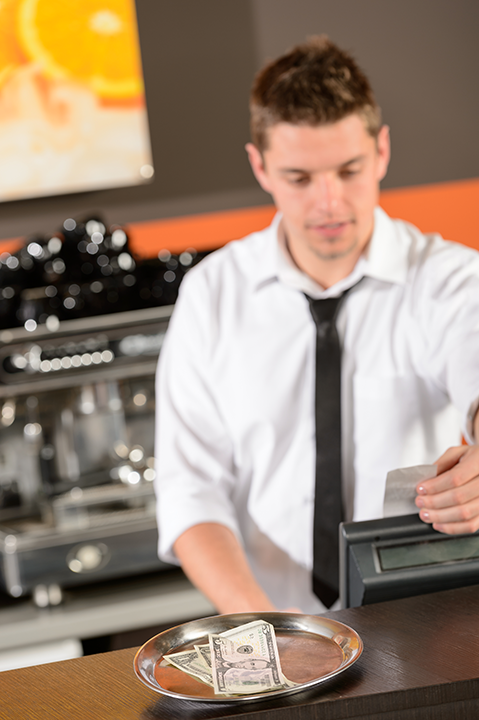When running a restaurant, there are many mishaps and pitfalls that can arise in the accounting aspects of the business. Unfortunately, common accounting mishaps can be found everywhere. This is mainly because accounting methods are used to track and report everything in a business. To help you out, we’ve put together this list of five common accounting mishaps and how to avoid them.

1. An Inefficient Accounting System
The Problem:
If you don’t have a properly setup and implemented accounting system, it can be very difficult to make good, informed decisions about your company. While “flying blind” can be thrilling in many aspects of life, it isn’t the best business model. Generally speaking, your ability to run your restaurant profitably is directly related to how well you can see and manage your accounts.
The Solution:
One of the best ways to make sure you have an efficient accounting system in place is to seek the help of an accountant or a restaurant financial consultant. They can help you make sure your systems are all working together and instruct you on how to correctly post different information to your General Ledger. Additionally, point of sale software, also known as POS software, can greatly facilitate your ability to track diverse aspects of your business so that you can be proactive in running your restaurant.
2. Incorrect Point of Sale (POS) Setup
The Problem:
After the basic accounting system, the most common accounting mishap happens during the initial setup of a restaurant POS system. Whether you as a restaurant owner or manager intend to use the accounting side of the point of sale software or not, it is important to understand that your General Ledger is only as accurate as you want it to be.
The Solution:
Correctly setting up your restaurant POS allows it to correctly track and report a myriad of information that can be integrated into your General Ledger. Remember that basic balances journalized on day one of month one go a long way toward the accuracy of (and your ability to accurately report) your company’s financial situation.
3. Bank Account Reconciliation
The Problem:
Another common mistake that can be avoided is found in the reconciliation of your bank account. Restaurant owners often forget that they have to manually journalize unrealized charges found on their bank statements—charges that are not known by the accounting software. These are often small charges for offhand supplies or inventory, bank fees, chargebacks, and credit card fees.
The Solution:
If you intend on reconciling your company’s bank account from month to month (as you should), you will need to be prepared to manually journalize unrealized transactions from your bank account to your General Ledger. These small charges add up quickly and can create a big difference between your actual account balances and what your accounting software is reporting. Again, your General Ledger is only as accurate as you want it to be.
4. Reports That Don’t Include Useful and Timely Information
The Problem:
Generally, income statements aren’t available until part way through the following month. So, if all you’re looking at are monthly income statements, your information is typically incomplete and not up to date. This makes it difficult to adjust employee schedules and food purchasing in a proactive manner.
The Solution:
Utilizing a restaurant POS, especially one that integrates directly with your accounting software, can help you track sales, inventory, and labor in an up-to-date and accurate way. You can get timely reports on accounts payable, accounts receivable, vendor ordering and inventory, payroll, transactions, and many more. Properly set up, point of sale software can even adjust inventory for each item sold based on what’s in it.
5. Menu Items Have Not Been Costed
The Problem:
Common practice when pricing menu items is to find a similar item at competing restaurants and then price your item similarly. While taking your competitors’ prices into account is important, it should never be your sole consideration. You need to know how much each item costs in order to correctly price your menu.
The Solution:
Each item’s cost should be determined and documented. While it can be time consuming, it is important to know exactly what goes into each menu item and how much those ingredients cost. This should also be reevaluated on a regular basis as your vendors and food costs change so that you can accurately account for how much each menu item costs and how much you should be charging for them.
In order for your restaurant to be as profitable as possible, you need to be able to make good decisions. In order for you to make good decisions, you need good information. You need to make sure that your General Ledger accurately reflects what is actually going on in your business. Hopefully this list helps you to find some of the pitfalls of restaurant accounting before they trip you up.